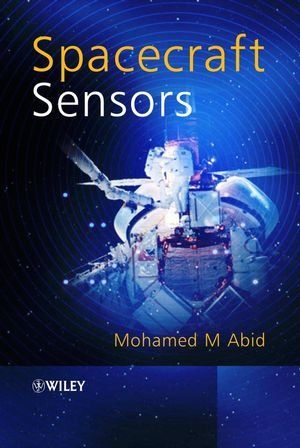Read more
Informationen zum Autor Mohamed M Abid is the author of Spacecraft Sensors, published by Wiley. Klappentext Spacecraft Sensors, the first of its kind, offers a comprehensive review of many aspects and intricacies of sensors used in the spacecraft industry. It covers sensor development from concept, design, and cost, to building, testing, interfacing, integrating, and on-orbit operation. It is intended for the specialist or non-specialist engineer, scientist, and those involved in the business aspect of the spacecraft industry.Focusing on how these various disciplines contribute to the development of a sensor used in space, this key text:* Explains how mathematics, physics, business, and engineering-based concepts are used to develop and design a sensor which complies with a set of specific requirements.* Discusses essential topics such as cost estimation, signal processing, noise reduction, filters, phased arrays, radars, optics, and radiometers used in space operation.* Covers a range of typical sensors used in the spacecraft industry such as infrared, passive microwave, radars and spacebased GPS sensors.* Concludes each chapter with examples of past and current orbiting sensors such as DSP, SBIRS, CHAMP, LANDSAT, and GOES to illustrate how concepts are applied.* Includes the Matlab codes used to create the example plots in order to give the reader a starting point for further analysisSpacecraft Sensors is an invaluable resource for engineers, technical consultants, those in the business division, and research scientists associated with spacecraft projects. It is also an excellent textbook for undergraduate and postgraduate students studying the development, design and applications of spacebased sensors. Zusammenfassung Spacecraft Sensors, the first of its kind, offers a comprehensive review of many aspects and intricacies of sensors used in the spacecraft industry. It covers sensor development from concept, design, and cost, to building, testing, interfacing, integrating, and on-orbit operation. It is intended for the specialist or non-specialist engineer, scientist, and those involved in the business aspect of the spacecraft industry.Focusing on how these various disciplines contribute to the development of a sensor used in space, this key text:* Explains how mathematics, physics, business, and engineering-based concepts are used to develop and design a sensor which complies with a set of specific requirements.* Discusses essential topics such as cost estimation, signal processing, noise reduction, filters, phased arrays, radars, optics, and radiometers used in space operation.* Covers a range of typical sensors used in the spacecraft industry such as infrared, passive microwave, radars and spacebased GPS sensors.* Concludes each chapter with examples of past and current orbiting sensors such as DSP, SBIRS, CHAMP, LANDSAT, and GOES to illustrate how concepts are applied.* Includes the Matlab codes used to create the example plots in order to give the reader a starting point for further analysisSpacecraft Sensors is an invaluable resource for engineers, technical consultants, those in the business division, and research scientists associated with spacecraft projects. It is also an excellent textbook for undergraduate and postgraduate students studying the development, design and applications of spacebased sensors. Inhaltsverzeichnis Preface. 1. Introduction. 2. Sensors and Signals. 3. Noise and Filtering in Spacecraft Sensors. 4. Infrared Sensors. 5. Passive Microwave Sensors. 6. Spacebased Radar Sensors. 7. GPS. Index. ...
List of contents
Preface.
1. Introduction.
2. Sensors and Signals.
3. Noise and Filtering in Spacecraft Sensors.
4. Infrared Sensors.
5. Passive Microwave Sensors.
6. Spacebased Radar Sensors.
7. GPS.
Index.

